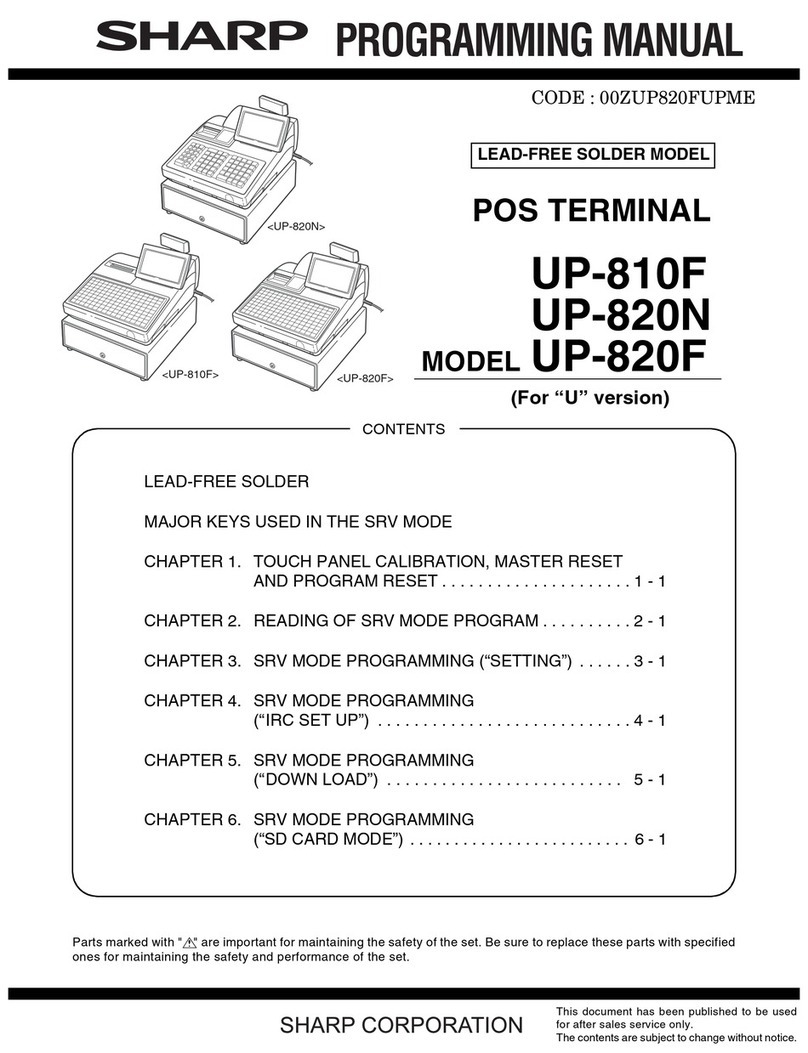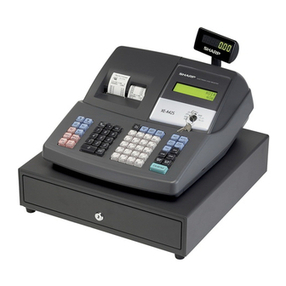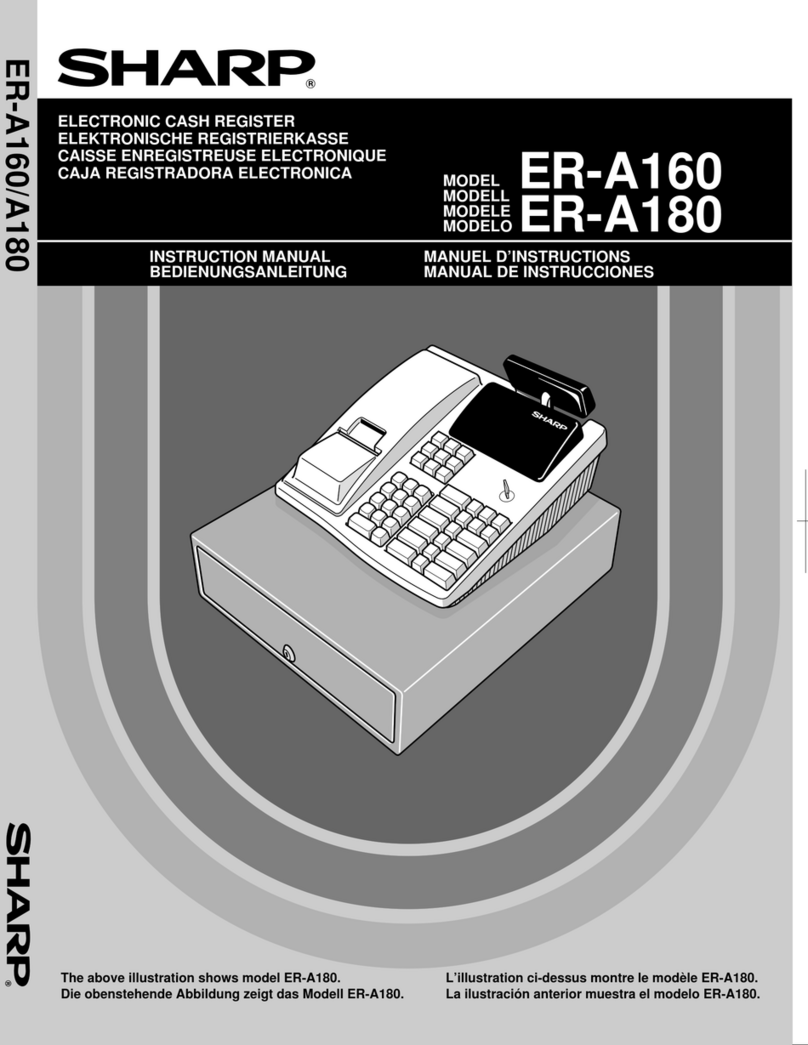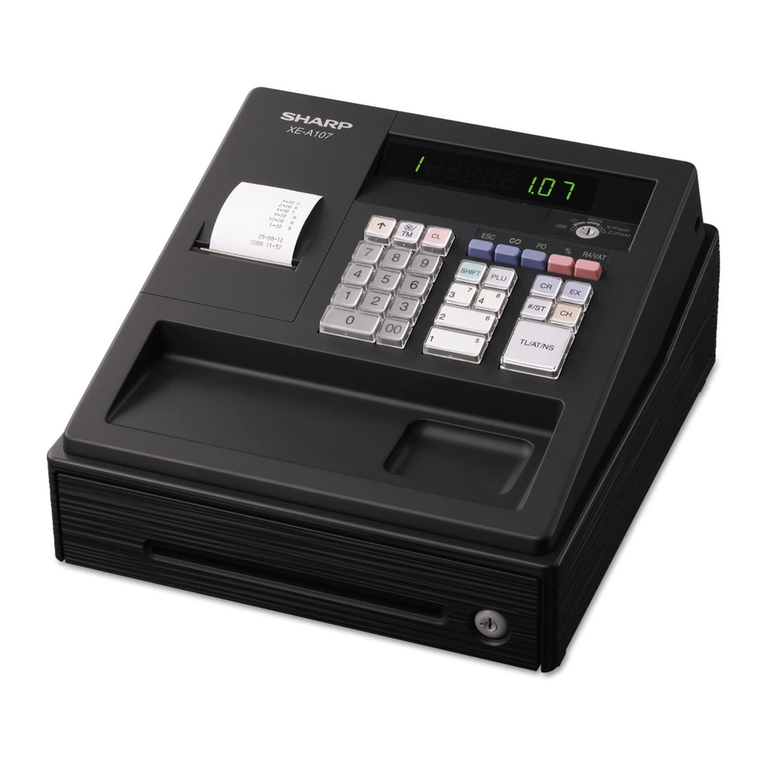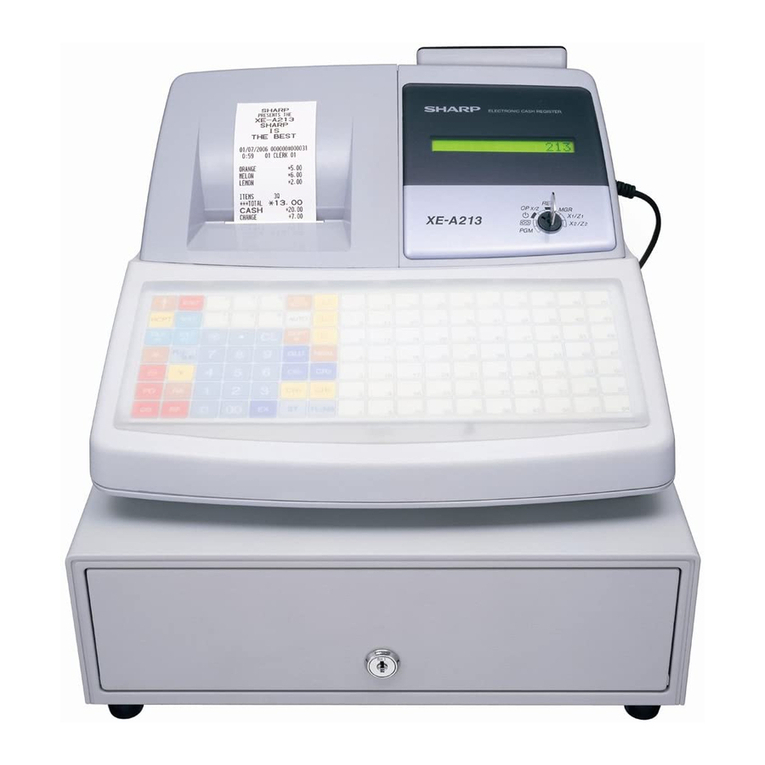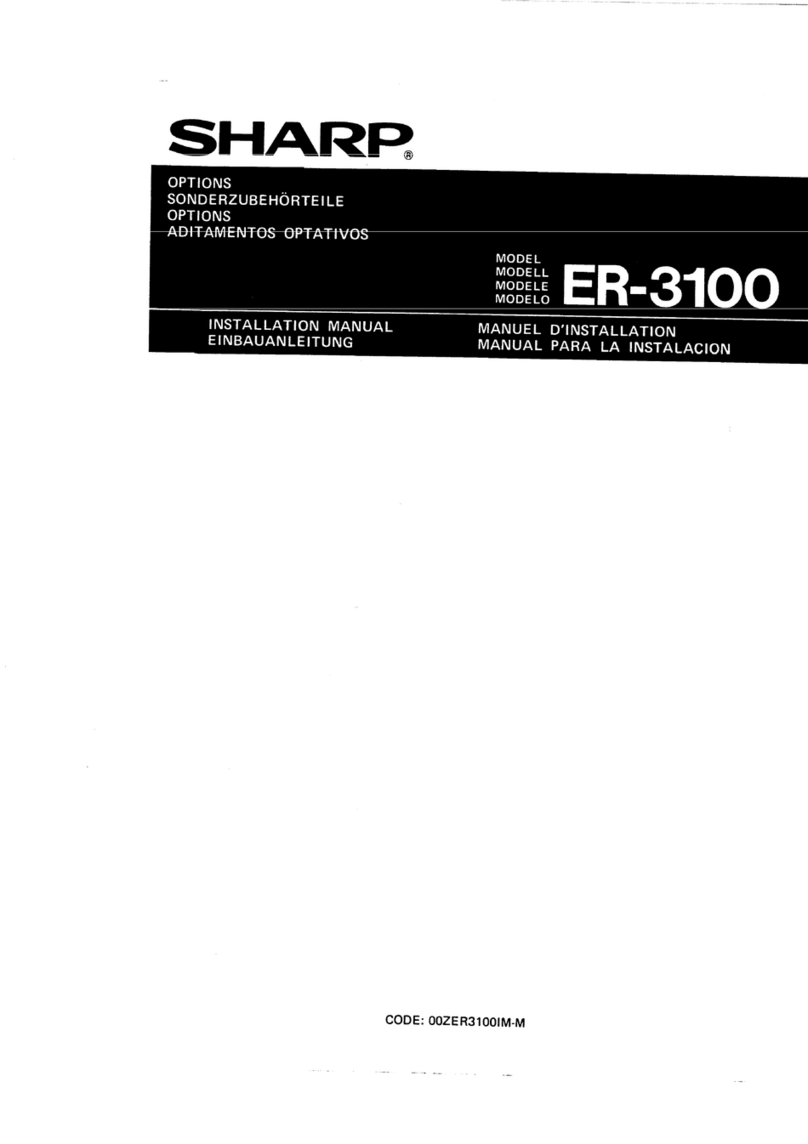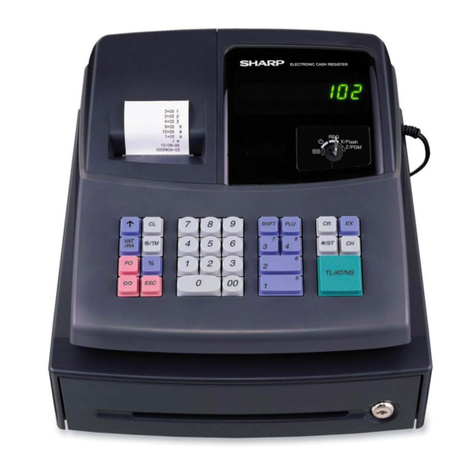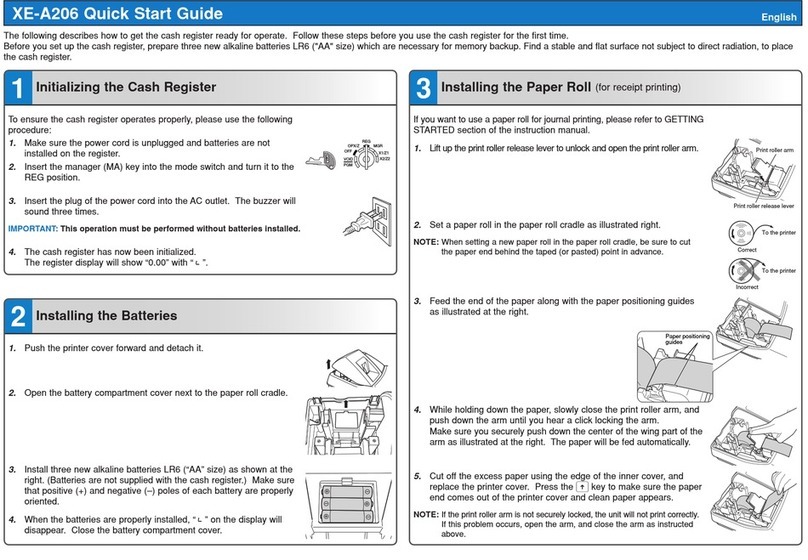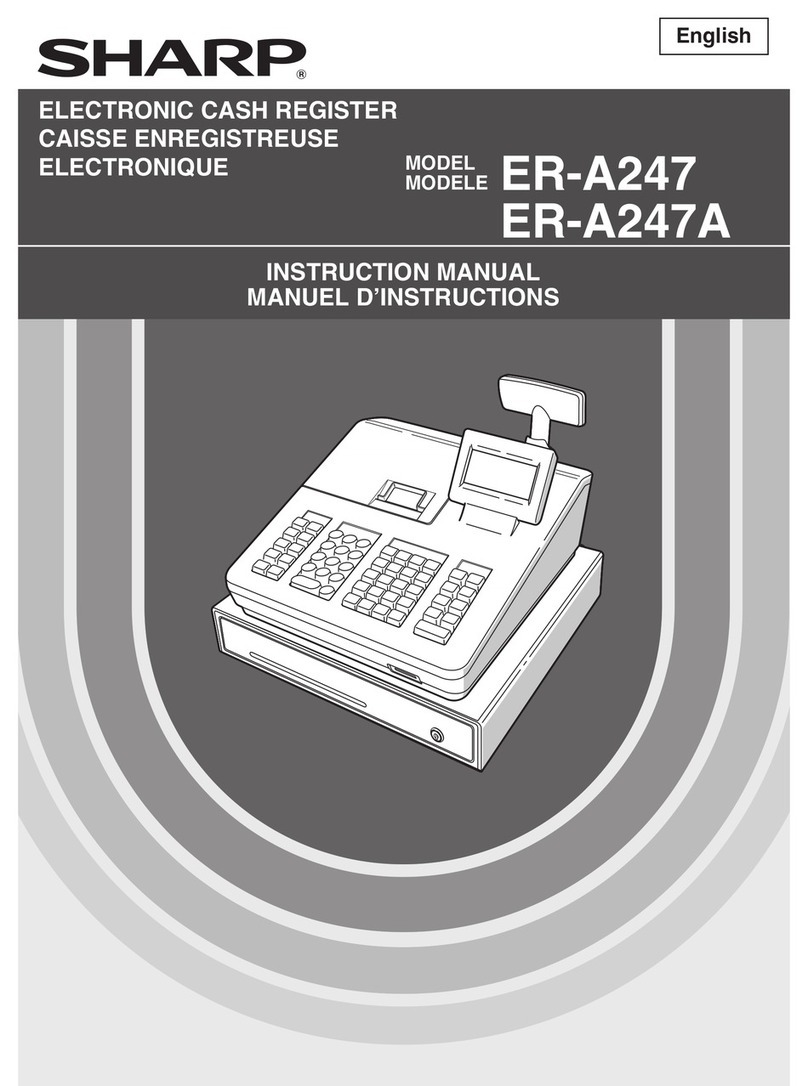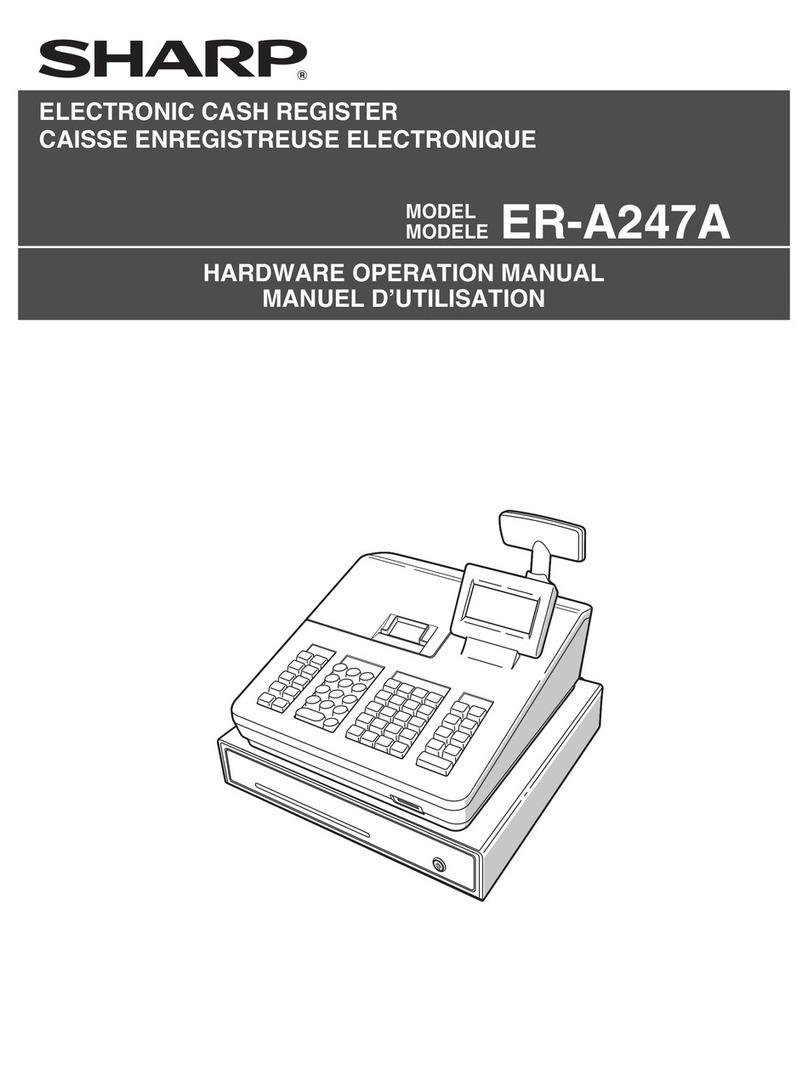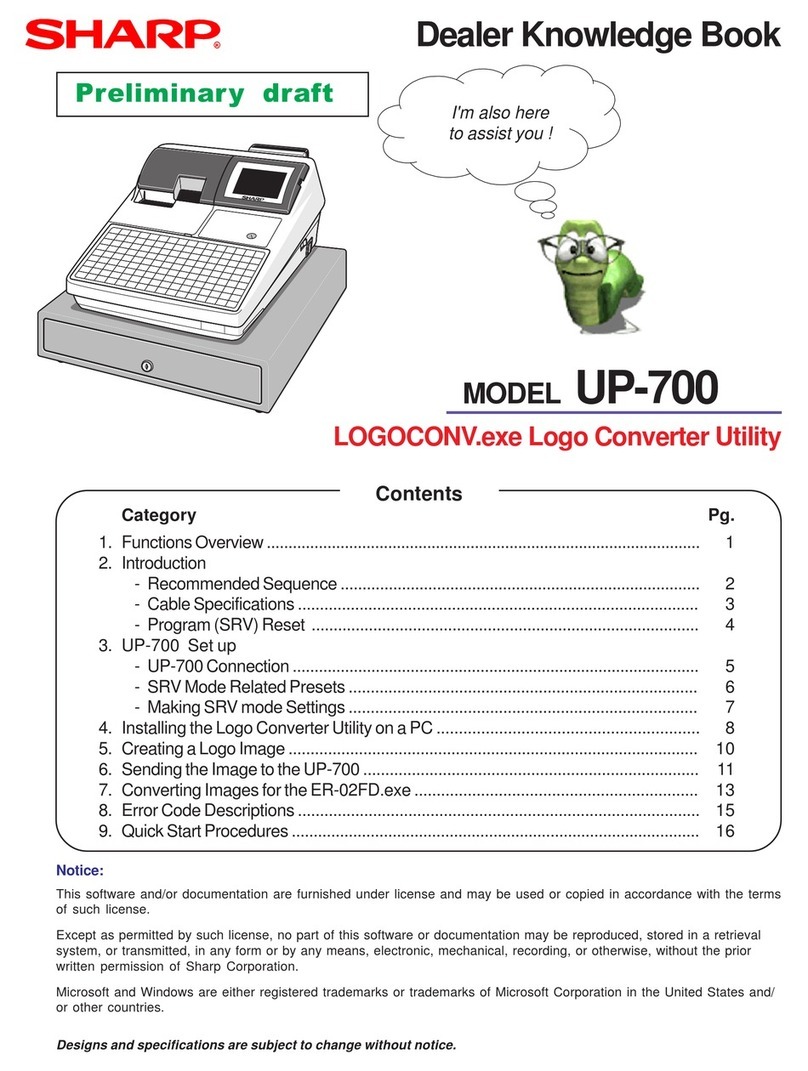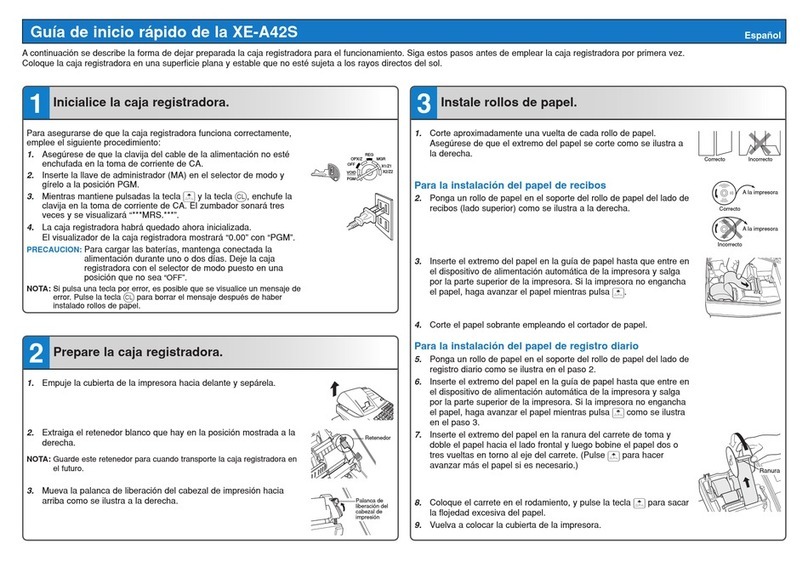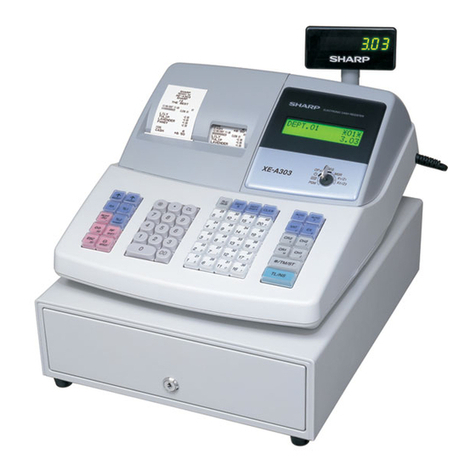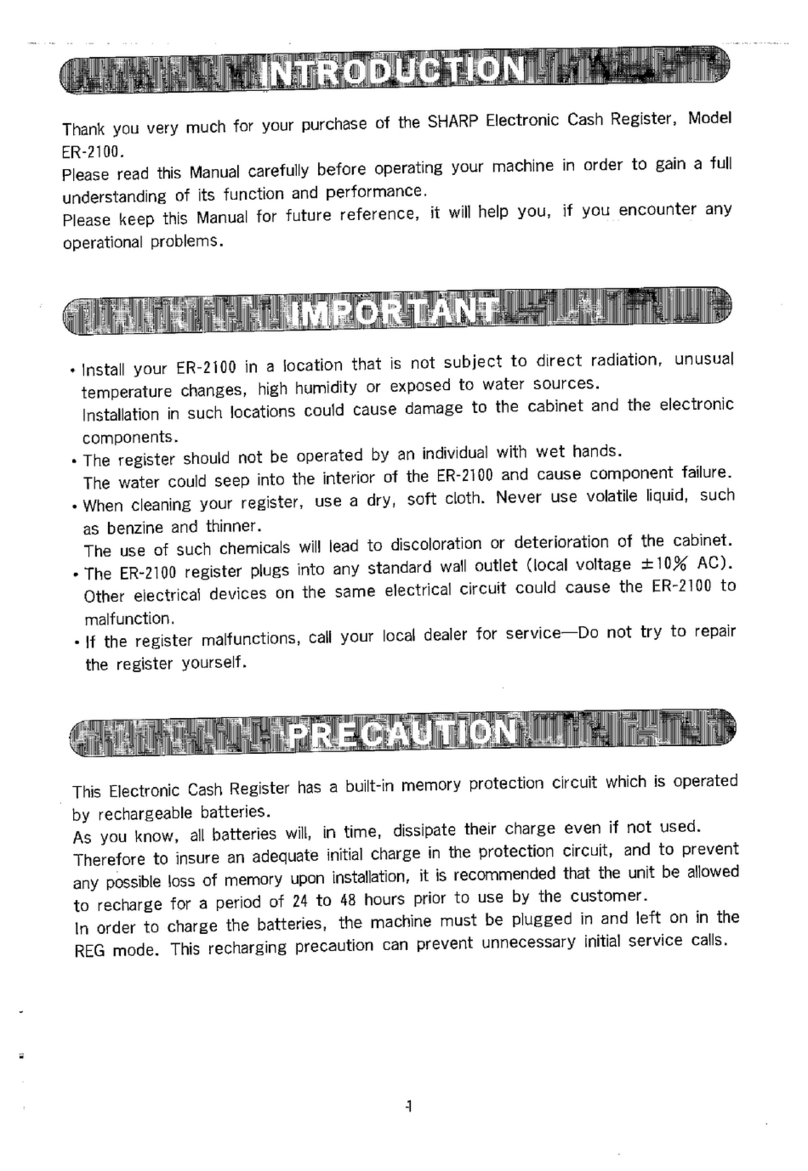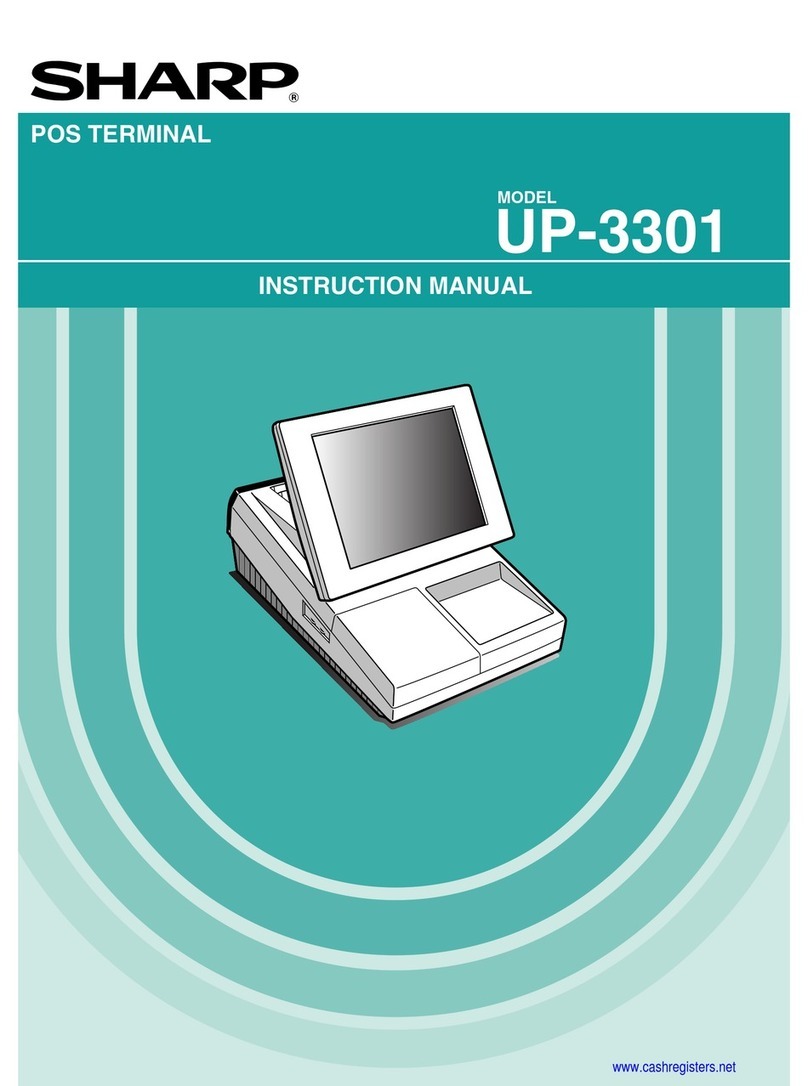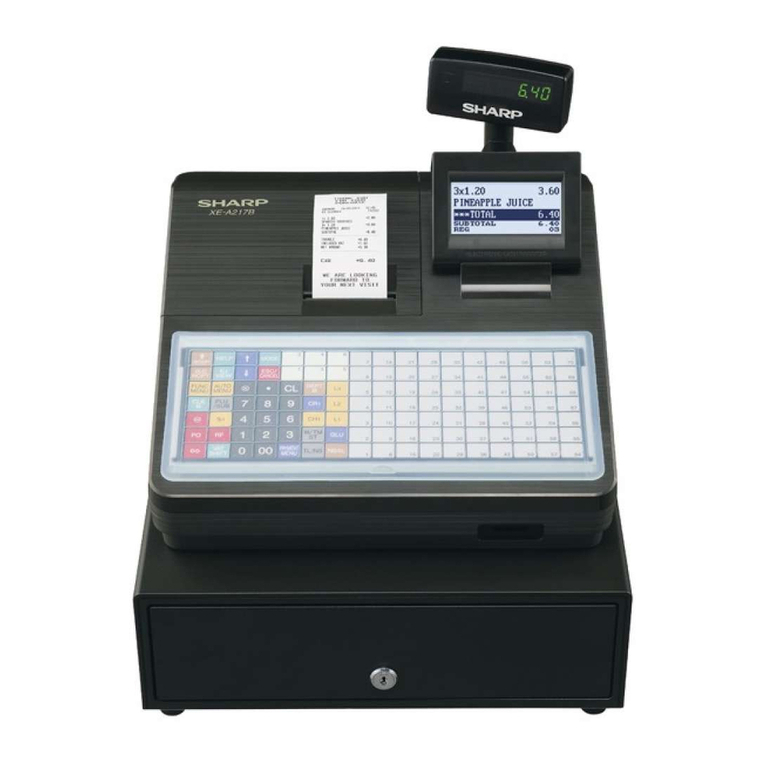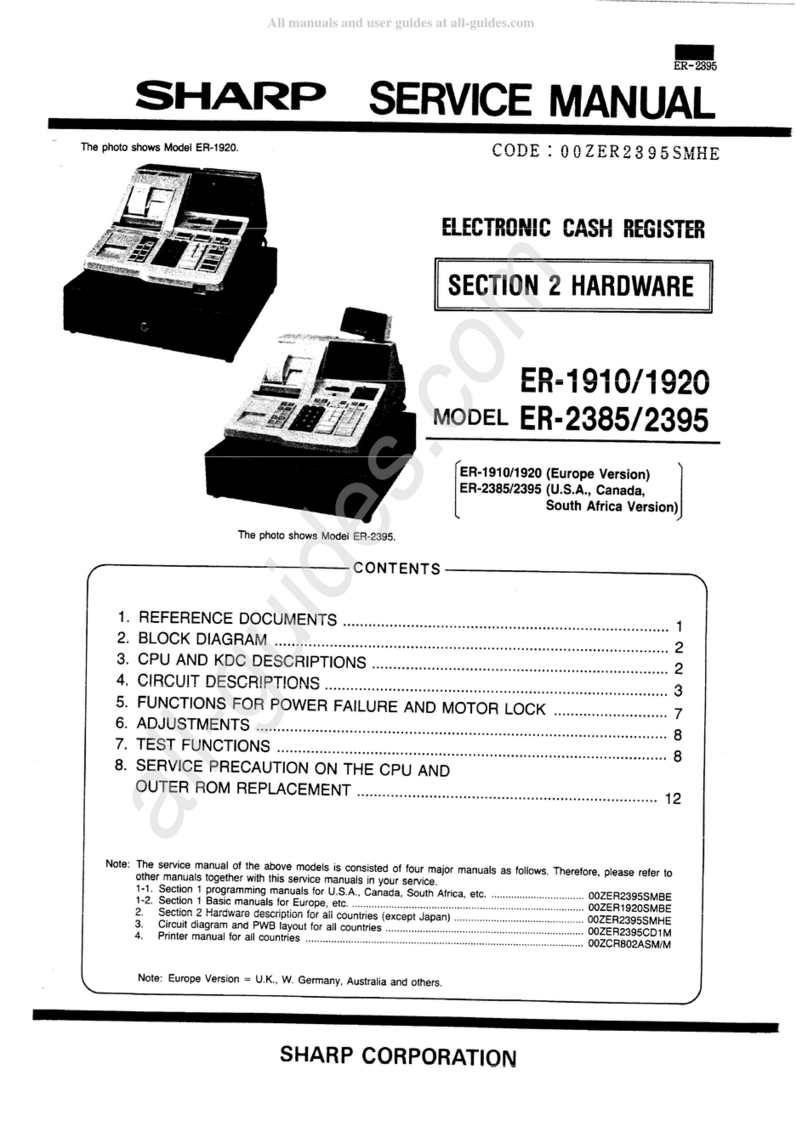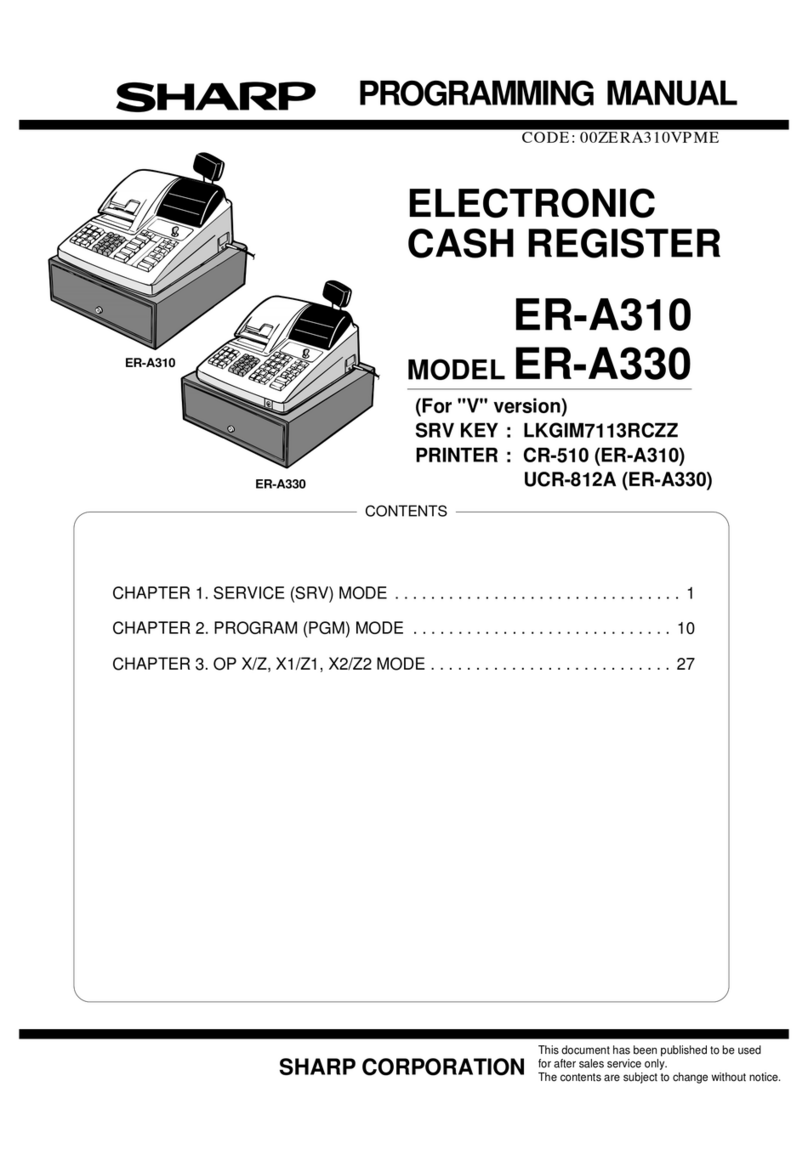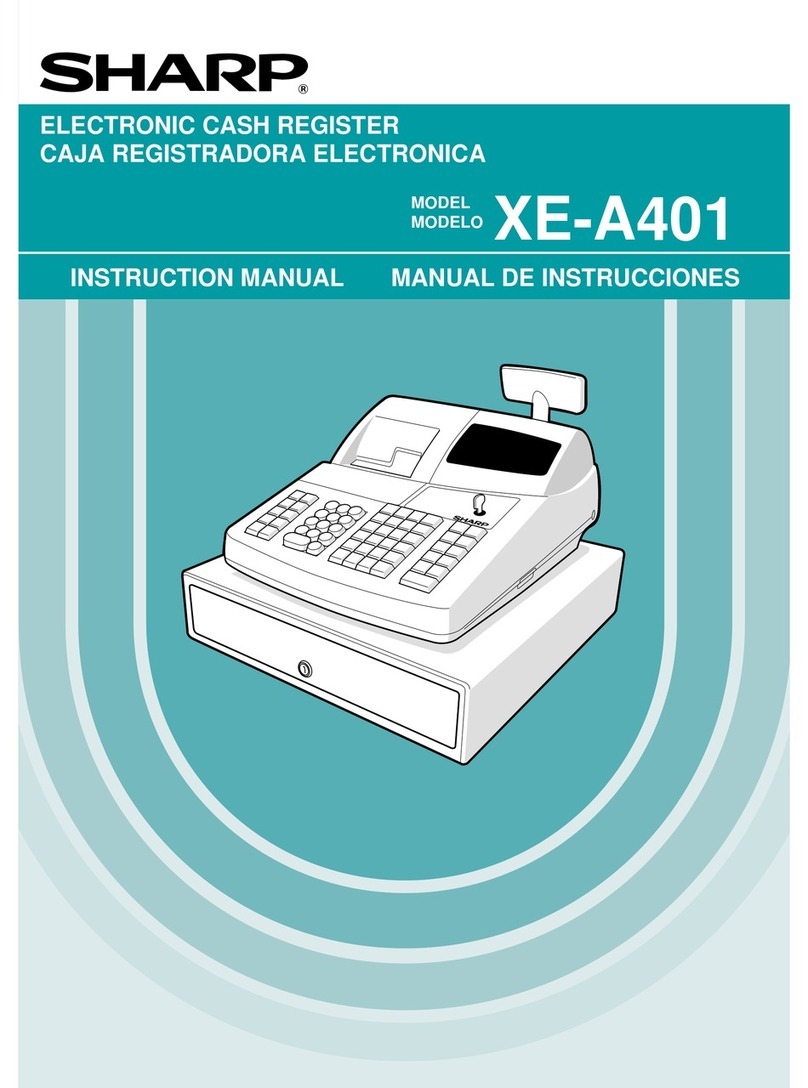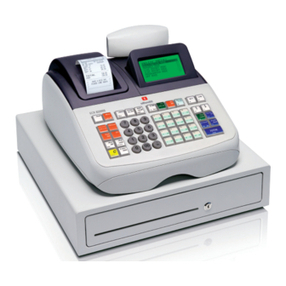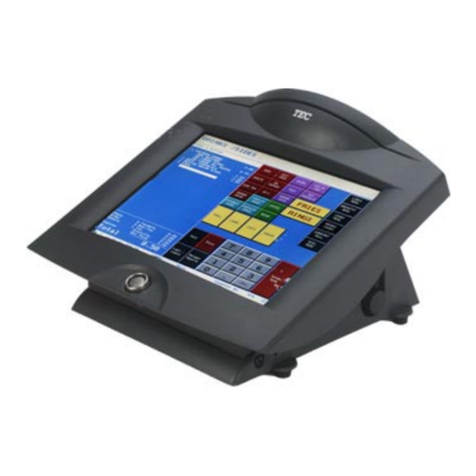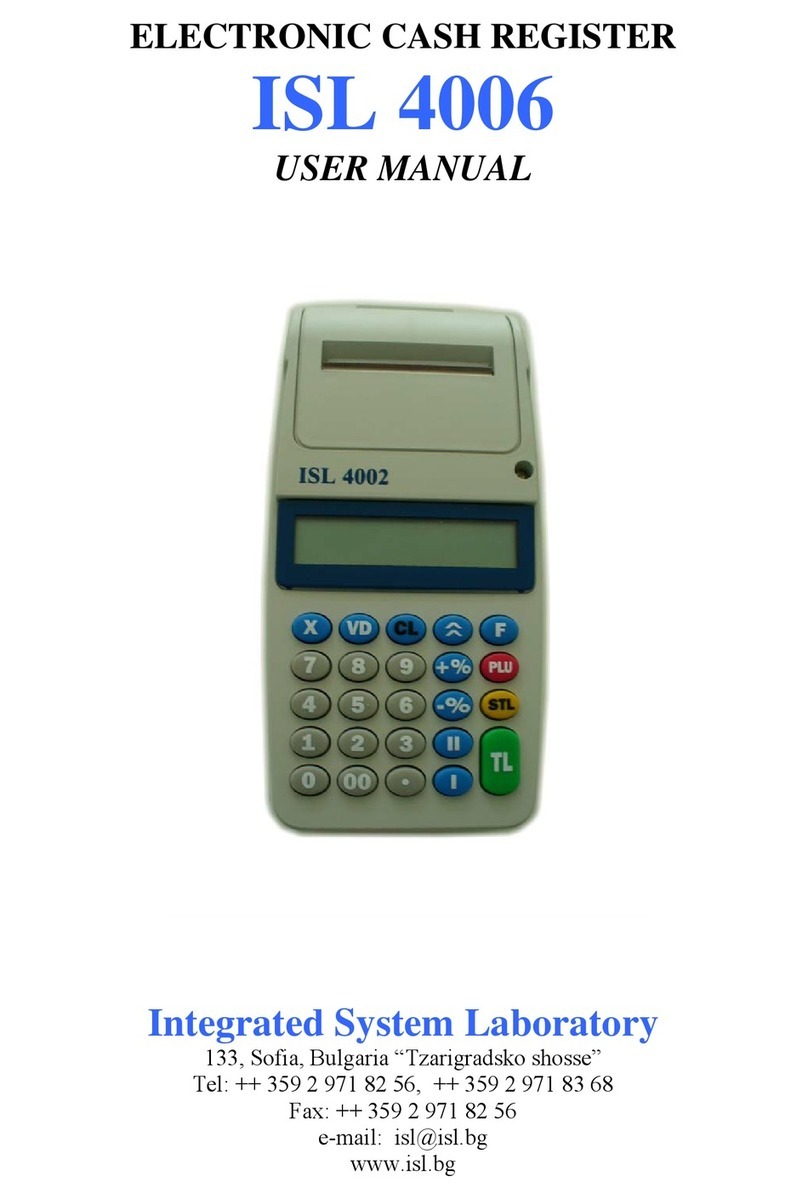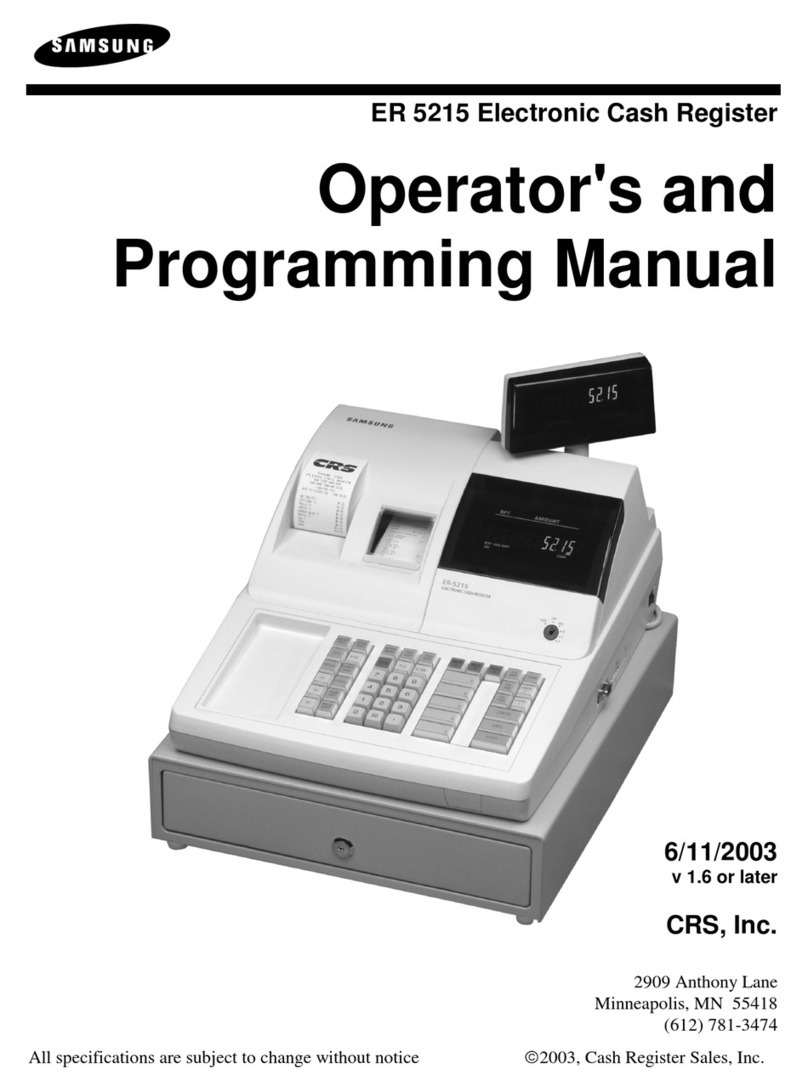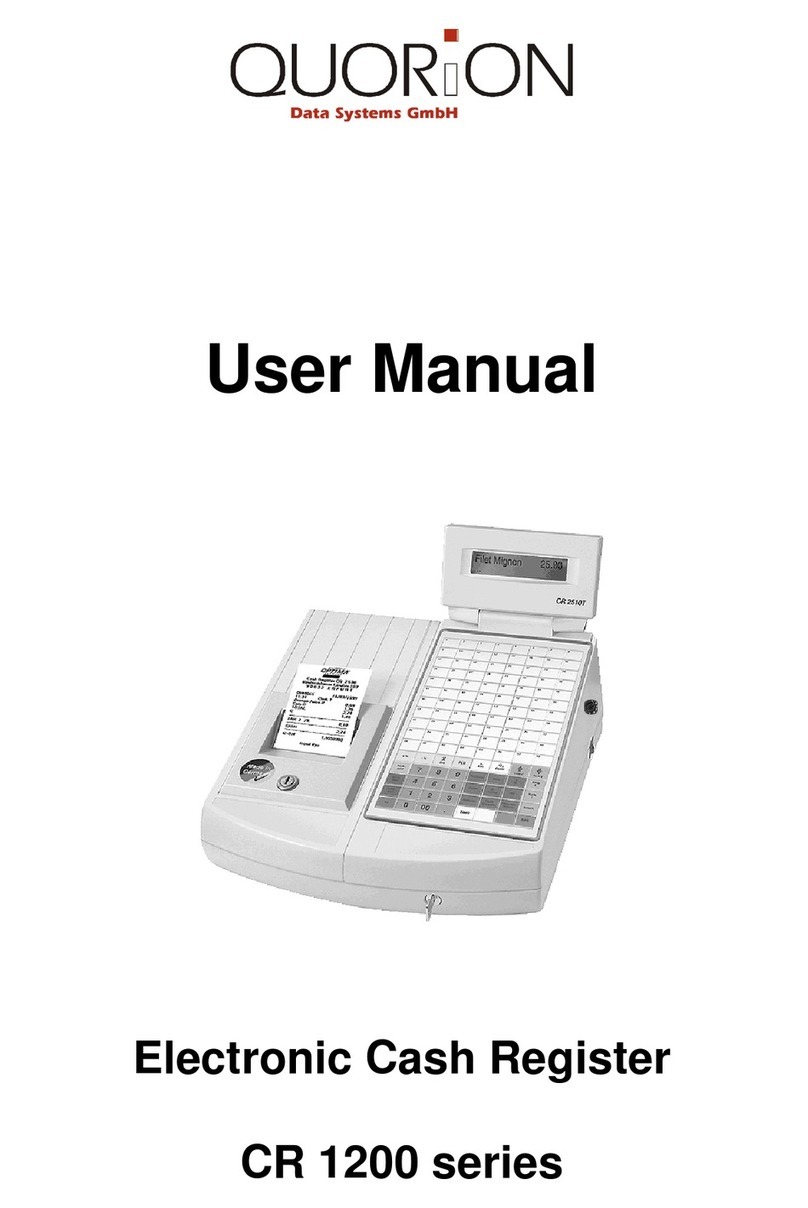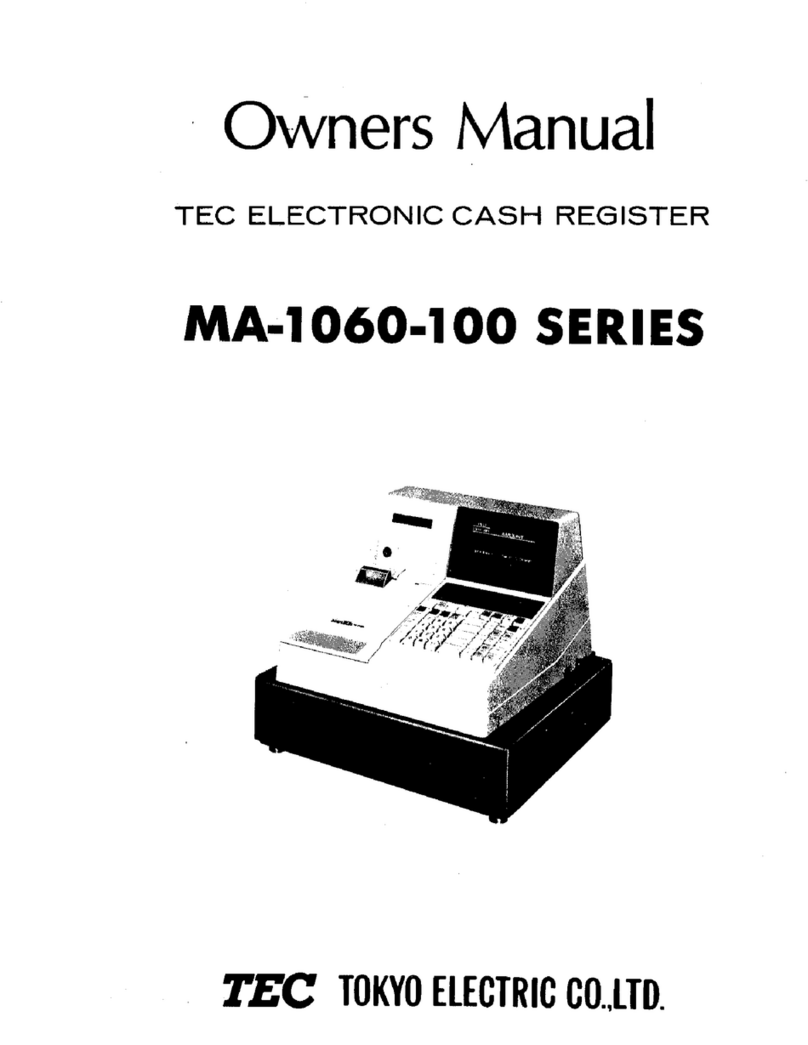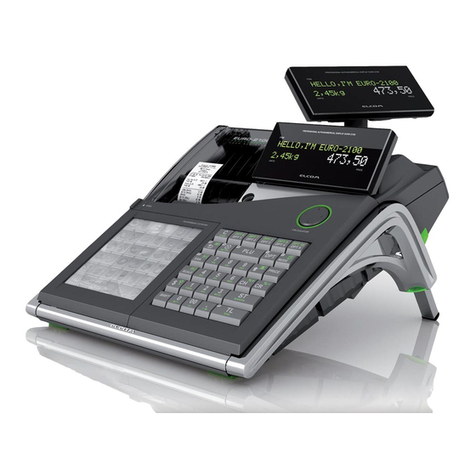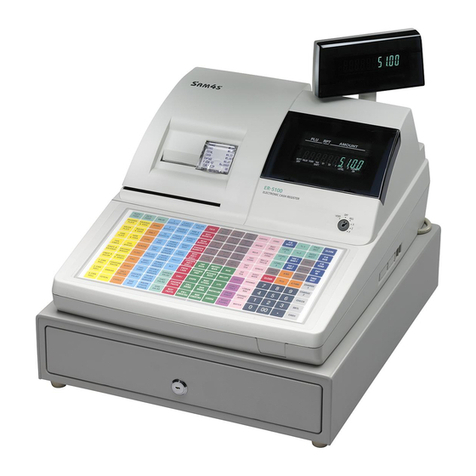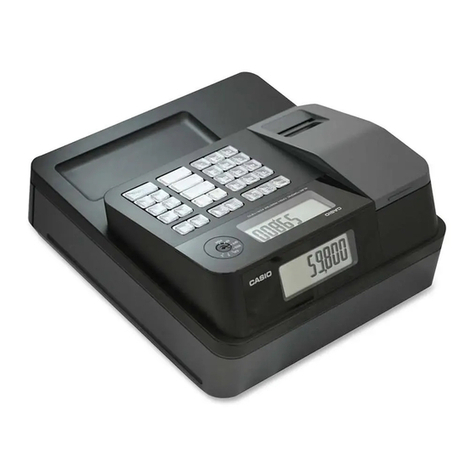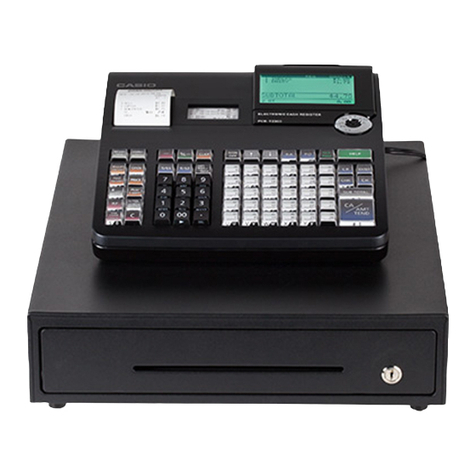
XE-A301V HARDWARE DESCRIPTION
– 7 –
4. I/O
M16C/24 PORT MEMORY SPACE: NORMAL MODE
PROCESSOR MODE: MICRO PROCESSOR MODE
It is used by (SEPARATE BUS 8bit Width)
PORT PIN
No. I/O Pin
name Signal
name Initial
value OFF
MODE Function PORT PIN
No. I/O Pin
name Signal
name Initial
value OFF
MODE Function
P00 88 I/O D0 Out L P54 42 O /HLDA (NU) Out L
P01 87 I/O D1 D1 Out L P55 41 I /HOLD /HOLD In
P02 86 I/O D2 D2 Out L P56 40 O ALE (NU) Out L
P03 85 I/O D3 D3 Out L P57 39 I /RDY /RDY In
P04 84 I/O D4 D4 Out L P60 38 O P60 DR1 L Out L DRAWER1DRIVE
SIGNAL
P05 83 I/O D5 D5 Out L P61 37 O CLK0 FSCK (NU) L Out L FMC FSCK
P06 82 I/O D6 D6 Out L P62 36 I RXD0 FRD (NU) L Out L FMC FRD
P07 81 I/O D7 D7 Out L P63 35 O TXD0 FSD (NU) L Out L FMC FSD
P10 80 O P10 RAS L Out L RECEIPT
PAPER FEED A P64 34 O /RTS1 /RS H Out L RS-232 /RS
P11 79 O P11 RBS L Out L RECEIPT
PAPER FEED B P65 33 O P65 /FRES (NU) L Out L FMC /FRES
P12 78 O P12 RCS L Out L RECEIPT
PAPER FEED C P66 32 I RXD1 RD In RS-232 RD
P13 77 O P13 RDS L Out L RECEIPT
PAPER FEED D P67 31 O TXD1 SD H Out L RS-232 SD
P14 76 O P14 JAS L Out L JOURNAL
PAPER FEED A P70 30 O TXD2 SO L Out L PRINTER DATA
OUT
P15 75 O P15 JBS L Out L JOURNAL
PAPER FEED B P71 29 I RXD2 SI In PRINTER DATA IN
P16 74 O P16 JCS L Out L JOURNAL
PAPER FEED C P72 28 O CLK2 PCLK L Out L PRINTER CLOCK
P17 73 O P17 JDS L Out L JOURNAL
PAPER FEED D P73 27 O P73 DR2 L Out L DRAWER2DRIVE
SIGNAL
P20 72 O A0 A0 Out L P74 26 O P74 /ER H Out L RS-232 /ER
P21 71 O A1 A1 Out L P75 25 I P75 /CD In RS-232 /CD
P22 70 O A2 A2 Out L P76 24 I P76 /CS In RS-232 /CS
P23 69 O A3 A3 Out L P77 23 I P77 /DR In RS-232 /DR
P24 68 O A4 A4 Out L P80 22 O P80 BUZZER L Out L
P25 67 O A5 A5 Out L P81 21 O P81 VHCOM L In PRINTER HEAD
CONTROL
P26 66 O A6 A6 Out L P82 20 I /INT0 POFF In
P27 65 O A7 A7 Out L P83 19 I /INT1 /FRDY (NU) L Out L FMC /FRDY
P30 63 O A8 A8 Out L P84 18 O P84 /BUSY (NU) L Out L FMC #BUSY
P31 61 O A9 A9 Out L P85 17 I /NMI /NMI (NU) In
P32 60 O A10 A10 Out L P86 11 O
XCOUT
XCOUT 32.768kHz
P33 59 O A11 A11 Out L P87 10 I XCIN XCIN 32.768kHz
P34 58 O A12 A12 Out L P90 7 I P90 MODE In MODE KEY SENSE
P35 57 O A13 A13 Out L P91 6 I P91 MSENS In MISCELLANEOUS
SENSE
P36 56 O A14 A14 Out L P92 5 O P92 BA1 L Out L BANK signal 1
P37 55 O A15 A15 Out L P93 4 O P93 BA0 L Out L BANK signal 0
P40 54 O A16 A16 Out L P94 3 O P94 DATA /CE L Out L LCD DATA LATCH
signal
P41 53 O A17 A17 Out L P95 2 O P95 BLON L Out L BACK LIGHT ON
P42 52 O A18 A18 Out L P96 1 O P96 LCDON L Out L LCD POWER ON
P43 51 O A19 A19 Out L P97 100 I P97 IPLON In IPL ON signal
P44 50 O /CS0 /CS0 Out H P100 97 I AN0 TM In HEAD temperature
monitor
P45 49 O /CS1 /CS1 Out L P101 95 I AN1 VPTEST In HEAD voltage
monitor
P46 48 O /CS2 /CS2 Out H P102 94 I AN2 VREF In Referance voltage
P47 47 O /CS3 /CS3 Out L P103 93 O AN3 /STRB1 H In PRINTER STORE
SIGNAL 1
P50 46 O /WR /WR Out L P104 92 O AN4 /STRB2 H In PRINTER STORE
SIGNAL 2
P51 45 O /BHE (NU) Out L P105 91 O P105 /STRB3 H In PRINTER STORE
SIGNAL 3
P52 44 O /RD /RD Out L P106 90 O P106 /STRB4 H In PRINTER STORE
SIGNAL 4
P53 43 O BCLK BCLK Out L P107 89 O P107 LATCH L In PRINTER LATCH
SIGNAL

